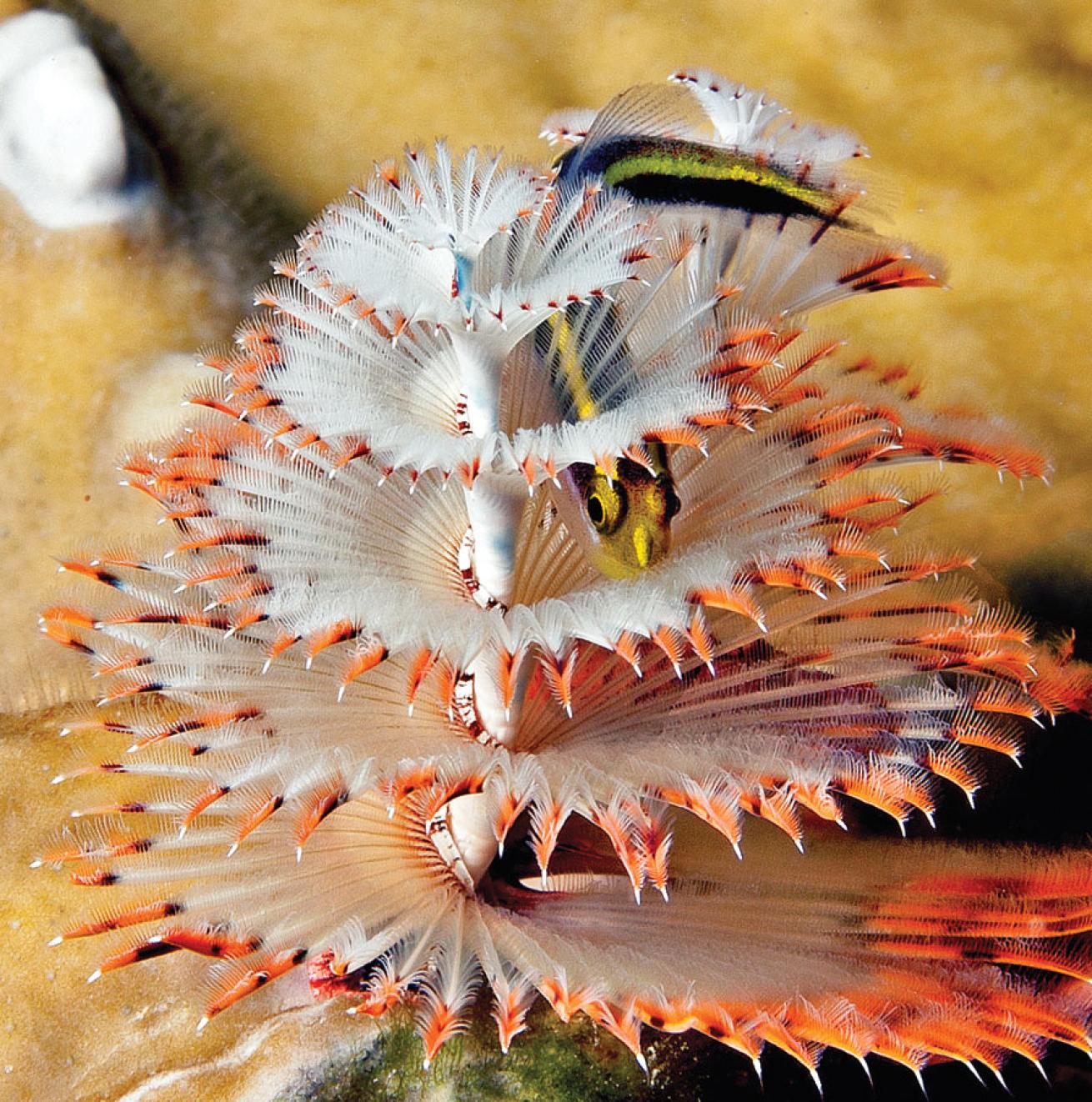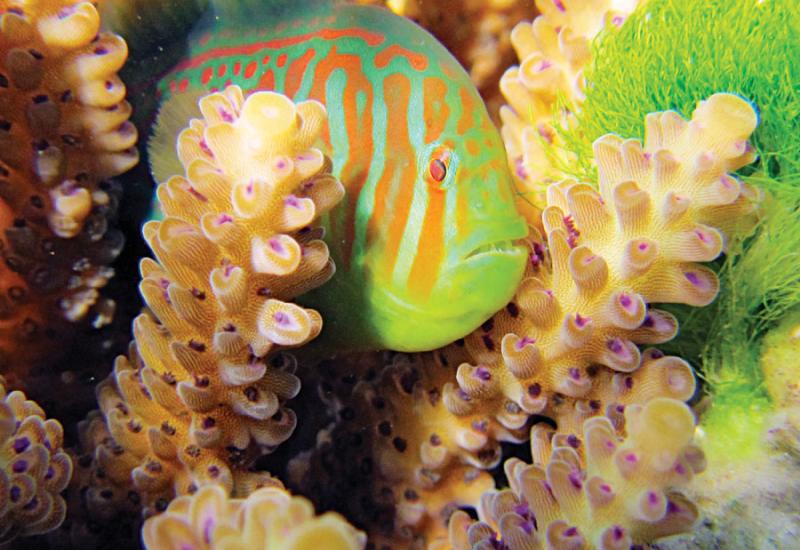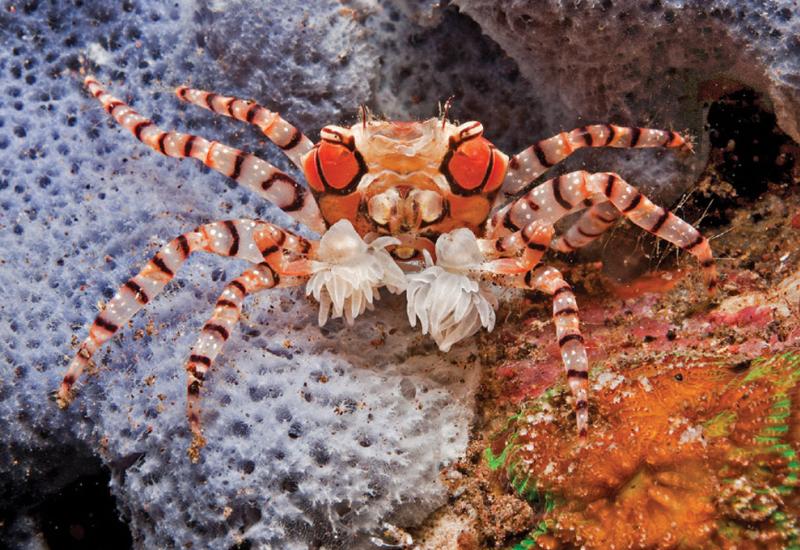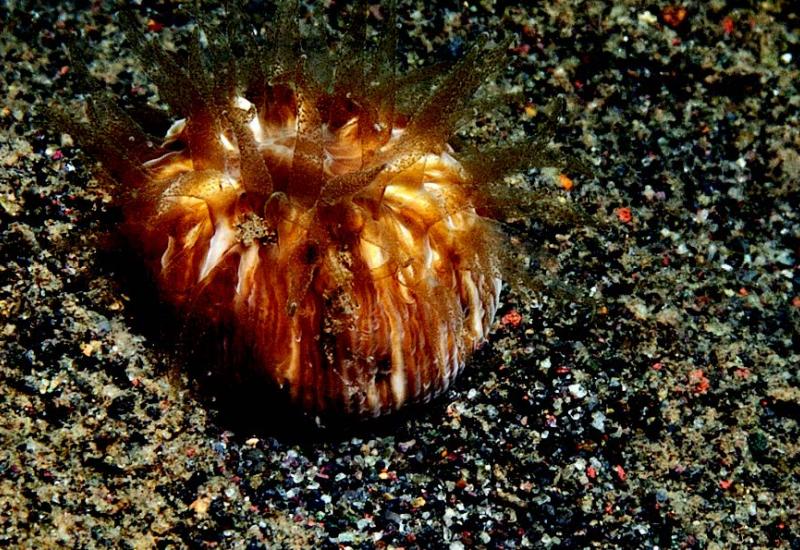Critter Hunt: Yellownose Gobies are Christmas-Tree Thieves

Christmas Tree Worm and Goby
Unsuspecting worms provide a meal ticket for yellownose gobies.
Ned and Anna DeLoach
When I became a diver, worms were among the first creatures I marveled at underwater. It was the whirling crowns of frilly tentacles extending from their segmented bodies that drew my eye — so colorful, so appealing, and so utterly unwormlike.
While the elongated bodies of Christmas tree worms (Spirobranchus giganteus) remain hunkered down inside strong calcareous tubes, the fragile crowns must deal with the rigors of the outside world. To avoid being eaten or damaged, the crowns retract in a flash when approaching shadows, or when unusual water movements are detected. For insurance, a trapdoor topped with a spike, known as the operculum, slams shut behind the disappearing tentacles.
The lovely twin crowns are lined with tiny mucus-covered structures, called cilia. When currents are calm, the cilia beat in waves to move water, supplying oxygen and filtering tiny particles of planktonic food and grit. The particles slowly move down the spiral to the worm’s mouth, where the food is sorted by size and preference. Sand is also stored as building material for the worms’ ever-lengthening tubes, which must keep pace with the coral’s slow growth.
In the southern Caribbean, yellownose gobies (Elacatinus randalli) often live on the same coral heads where Christmas tree worms reside. The gobies obtain the majority of their meals by picking parasites of fish, but it seems they can’t resist easy pickings at the expense of Christmas tree worms. Anna and I have watched the little thieves go on regular rounds, snatching food from worm after worm before the crowns have a chance to retract. If food is trapped deep within the worm’s tentacles, the gobies turn into cat burglars, finessing their way inside the spirals. There they nibble away discreetly until the worms finally detect their presence and snap shut.
More from Ned and Anna DeLoach:
Kidnapped! | Bumblebee Shrimp | Caribbean Hideaway | Jellyfish Gardening | Sergeant-Major Hatching

Ned and Anna DeLoachUnsuspecting worms provide a meal ticket for yellownose gobies.
When I became a diver, worms were among the first creatures I marveled at underwater. It was the whirling crowns of frilly tentacles extending from their segmented bodies that drew my eye — so colorful, so appealing, and so utterly unwormlike.
While the elongated bodies of Christmas tree worms (Spirobranchus giganteus) remain hunkered down inside strong calcareous tubes, the fragile crowns must deal with the rigors of the outside world. To avoid being eaten or damaged, the crowns retract in a flash when approaching shadows, or when unusual water movements are detected. For insurance, a trapdoor topped with a spike, known as the operculum, slams shut behind the disappearing tentacles.
The lovely twin crowns are lined with tiny mucus-covered structures, called cilia. When currents are calm, the cilia beat in waves to move water, supplying oxygen and filtering tiny particles of planktonic food and grit. The particles slowly move down the spiral to the worm’s mouth, where the food is sorted by size and preference. Sand is also stored as building material for the worms’ ever-lengthening tubes, which must keep pace with the coral’s slow growth.
In the southern Caribbean, yellownose gobies (Elacatinus randalli) often live on the same coral heads where Christmas tree worms reside. The gobies obtain the majority of their meals by picking parasites of fish, but it seems they can’t resist easy pickings at the expense of Christmas tree worms. Anna and I have watched the little thieves go on regular rounds, snatching food from worm after worm before the crowns have a chance to retract. If food is trapped deep within the worm’s tentacles, the gobies turn into cat burglars, finessing their way inside the spirals. There they nibble away discreetly until the worms finally detect their presence and snap shut.
More from Ned and Anna DeLoach:
Kidnapped! | Bumblebee Shrimp | Caribbean Hideaway | Jellyfish Gardening | Sergeant-Major Hatching










